By Cecelia Wilken, Current ASU Nutrition Student
One of the tell-tell signs that the holidays are approaching in Central Phoenix are tamales. I have vague childhood memories of my day-care provider’s family huddled around tables stacked high with ingredients. The smell of corn, cumin, chili, and roasted pork filled the air as the family’s elders worked diligently to make hundreds of tamales as soon as the cool autumn air rolled in. My mother, who worked for a large accounting firm in downtown Phoenix, would bring home armfuls of Ziploc bags filled tightly with tamales gifted to her from coworkers. Pop-up tamale vendors start appearing in grocery store parking lots, where you could buy 20 tamales and a stack of homemade corn tortillas for less than $10 out of a very nice abuela’s car trunk.
Each year, we had the same conversations with friends and tamales would fill our freezer.
“We’ve made too much this year! Please enjoy these.”
“My abuela went a bit crazy with the tamales this year. She wanted you all to have some.”
“Thank you for being so kind to us this year. Please accept these tamales.”
Without realizing it, tamales had sort of become a family tradition during the holidays. While my family never made them, there was never a shortage. It wasn’t until I moved across the country with my own family that I noticed the hole.
A hole left from the lack of tamales in my life. Growing up surrounded by the Hispanic culture in Arizona, I was blessed with an endless supply of delicious Mexican foods. After moving to the Carolinas, it became blatantly obvious that I took advantage of all the amazing Hispanic food available to me. As soon as the holidays roll around, my cravings for tamales return and I’m always left feeling extremely homesick. I kept hoping that someday, someone would knock on our door and gift us with an armful of homemade tamales. Wishful thinking.
I have always wanted to make my own homemade tamales. I pictured myself, surrounded by my family as we worked to make hundreds of tamales, and the smiles we would receive from friends as we would gift them with armfuls of tamales we made with our own hands. This year I decided to make my vision a reality. After watching many YouTube videos, hours scouring Pinterest, and attempting to coax some family recipes out of my own Phoenix friends I finally felt confident enough to start my own tamale journey.
First, I had to decide on the fillings! So many options. But after consulting with my husband (who was very excited and supportive of my new adventure), I decided on a classic red chili pork filling.
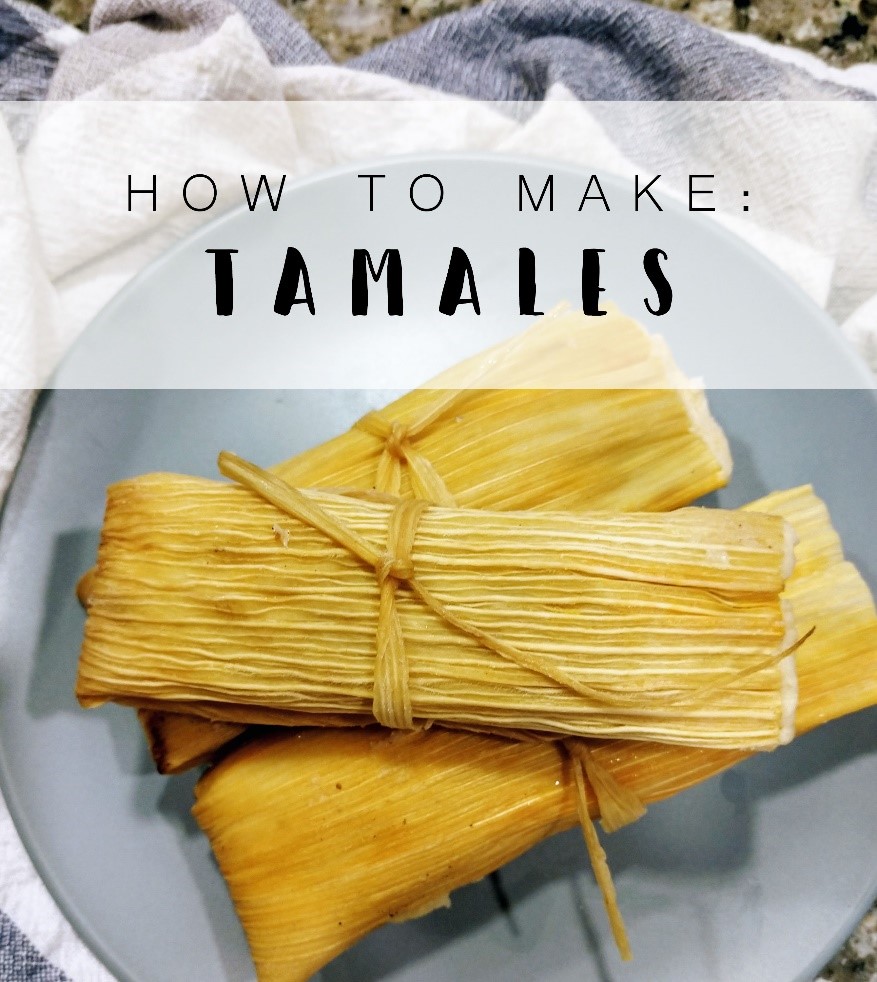
Ingredients:
- Dried corn husks – 1 bag usually contains 30-50 husks
- 1 pork shoulder, butt or loin
- 2-3 heaping tablespoons cumin
- 2 7 oz. cans of chipotle peppers in adobo sauce
- Juice from 1 lime
- Juice from 1 orange
- ½ cup of brown sugar
- 2 tomatillos
- 4 cloves of garlic
- 3 Tbs. olive oil
- 2 roasted poblanos with skin removed
- Optional: 2 roasted jalapeños (for added heat) or cheese
- Salt & Pepper
- 4 cups Instant Masa – Cornflour
- 1 ½ cups Lard (or vegetable shortening)
- 2 cups hot chicken broth
- 2-4 cups hot water
- 3 tsp. baking powder
Preparation:
While tamales take time to make, the result is worth the extra effort. The nice thing about making tamales is that you can break up the steps, stop and pick it back up the next day. I spent two days making these tamales, but you could easily stretch the process over three to four days.
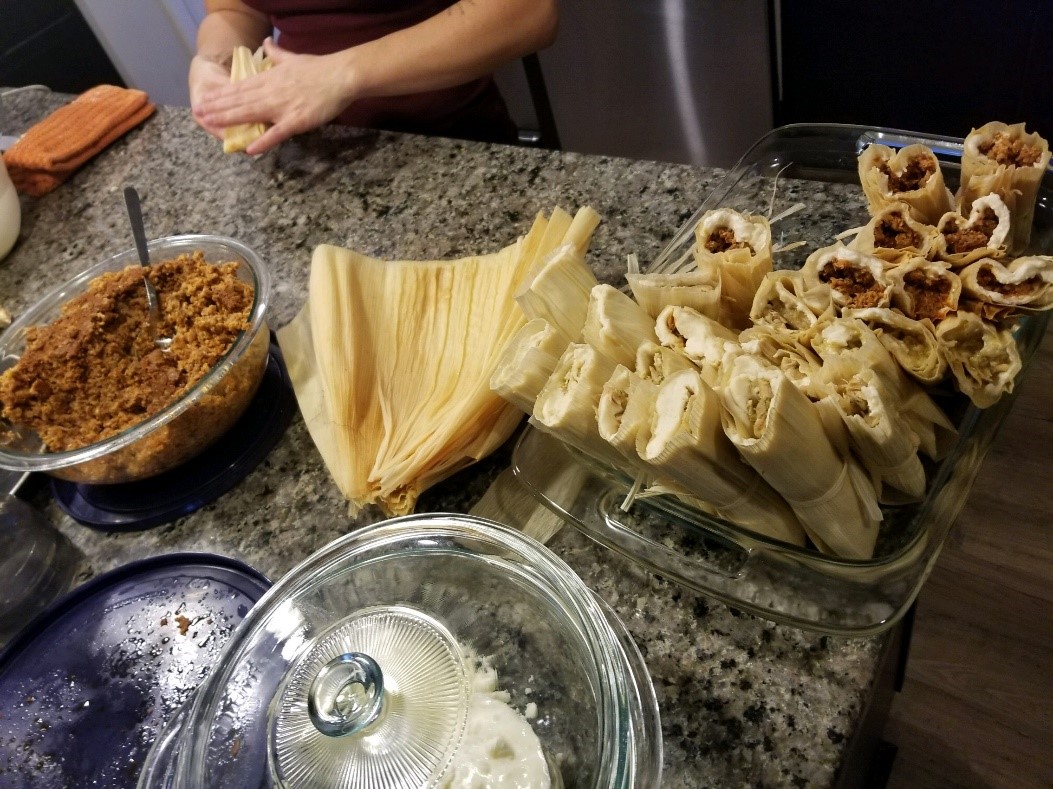
- The Husks. I soaked the corn husks overnight, making sure they were completely submerged. You want to make sure you soak them for at least three hours.
- The Filling. While it is possible to purchase your own chili sauce, making it by hand is fairly easy. First, roast any peppers you want to add to your sauce. I roasted 2 poblanos under the broiler in the oven for five to six minutes on each side. Remove the skin and seeds from the peppers and the canned chipotle peppers with the sauce, the cumin, lime juice, orange juice, brown sugar, tomatillos (without the husk), garlic, olive oil, and salt and pepper to a blender and mixed until smooth. Cube the pork and let marinate in the sauce for at least three hours, or overnight. Roast in a covered, oven-safe container for 2.5 hours at 275° Let cool for at least 30 minutes and then shred. To speed up production time, I added the cooked pork to a food processor and roughly chopped it all up instead of shredding it.
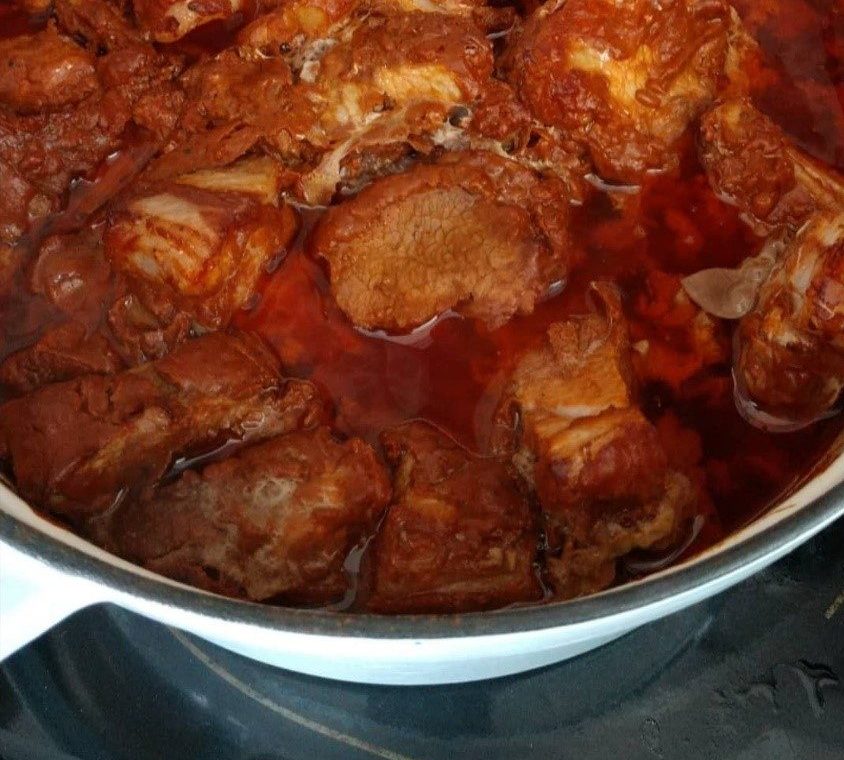
- The Masa. Many Hispanic grocery stores around Arizona will have premade masa available for purchase. Especially around the holidays. One pound of masa usually makes about 6 tamales. To make your own, start by mixing your masa flour with three to five cups of hot water. Add the water a cup at a time, stopping when the dough sticks together but is still sort of crumbly. Let it sit for 15 minutes. Next whip the lard or shortening in a stand mixer for two minutes or until light and fluffy. Add the baking powder and a few teaspoons of salt and mix until combined. Next, add the masa dough to the whipped lard in thirds until well combined. After, add in one cup of hot chicken broth to the mixture at a time until the mixture is light, creamy, fluffy and sticky (not crumbly). This will help the dough stick to the mixture.
- Putting it all together. Once you have prepped all your ingredients, it is time to build your tamales. Start with a pre-soaked husk that has been strained of the extra water. Sort of spackle on a layer of masa dough onto the bottom half of the husk (the fat side), lay down a row of filling right down the middle, wrap the edges around the filling, fold the other half over itself, and secure with a tie made from stringed husk or twine. The process takes a bit of time to get used to, but if you include members of your family it will expedite the process.
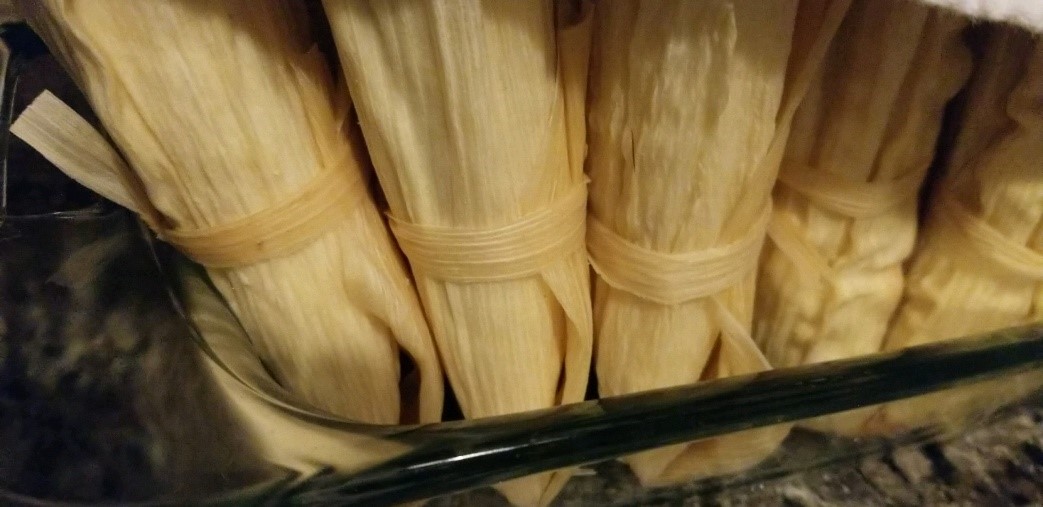
- Steam them! In a large double-boiler pot with just enough water to touch the bottom of the steam insert, place your tamales upright in it and cover with a few empty corn husks before placing a lid on top. Steam them for three hours, or until the masa peels easily away from the husk. Let sit to cool for at least 15 minutes before digging in.
Tamales will keep in the fridge for a week or so or in the freezer for months. To reheat them, all you need to do is wrap them in moist paper towels and microwave for a few minutes, or if you plan on reheating a lot, place them back in the steamer for about 30 minutes.
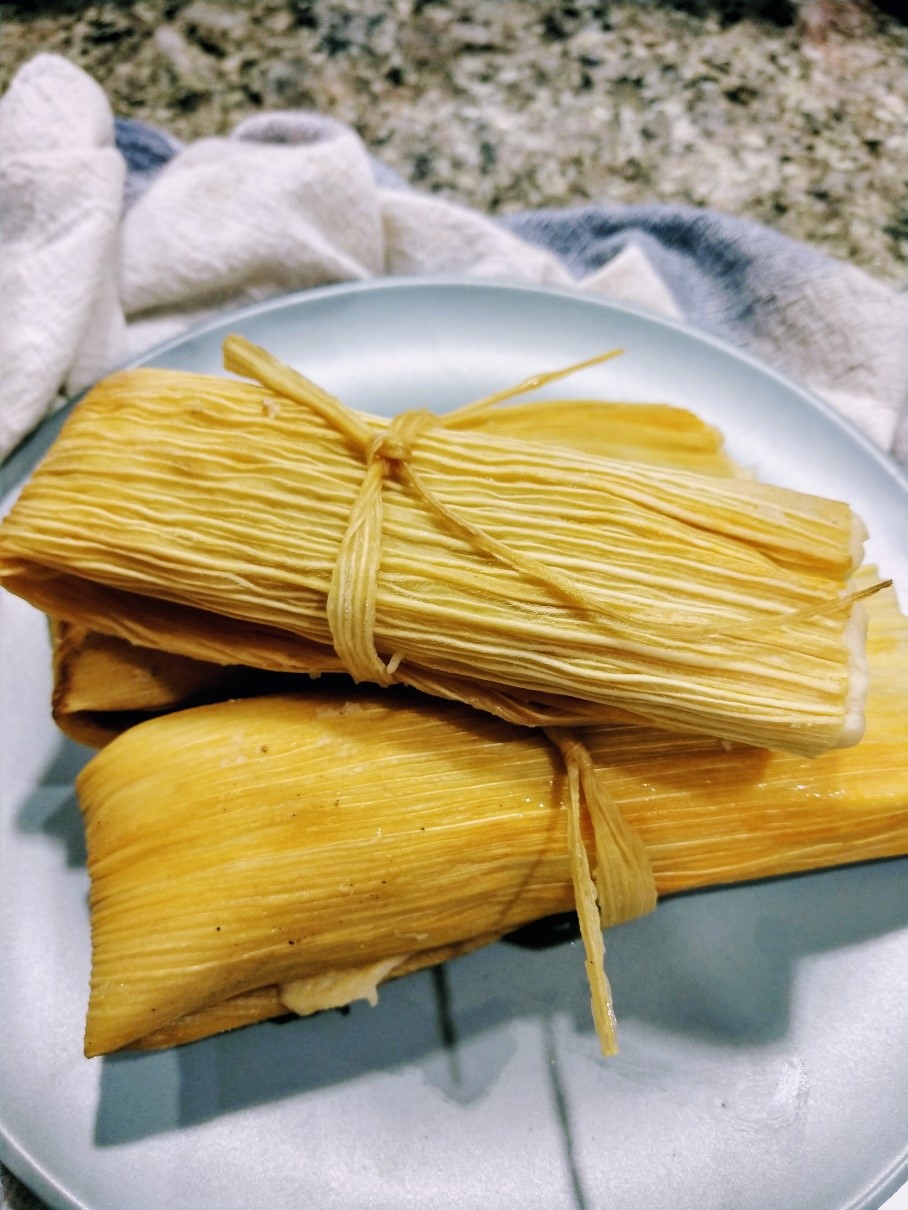
It was a blast having my family in the kitchen helping me construct our dozens of tamales. My toddler loved “painting” masa on the corn husks and my husband enjoyed showing off our hard work to his friends, and I loved how nostalgic and homey it made me feel. Making tamales is something that will probably become a yearly event for us. I can’t wait to try creating new fillings over the years!
To find local Arizona ingredients for your own tamale adventure visit this article for more information. If you’re looking more recipes check out the Fill Your Plate recipe section. There are hundreds of different dishes to try.

